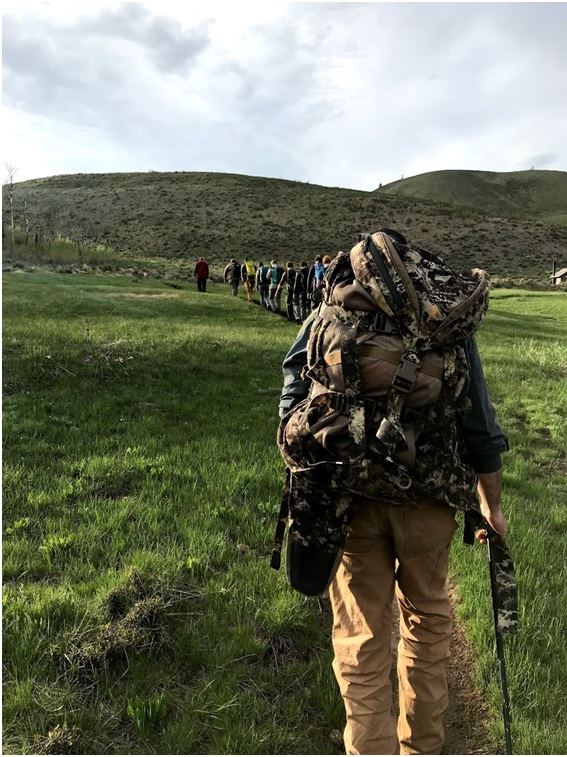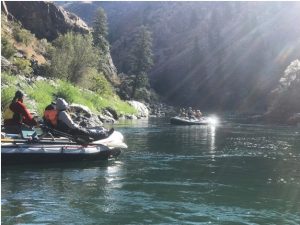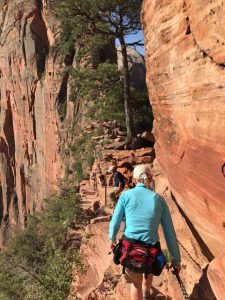Leadership Lessons from the Wilderness

I recently participated in a 10-day intensive training to become a Wilderness First Responder through a NOLS training program that quickly took me out of my comfort zone and reminded me of the leadership lessons available in wilderness settings. They apply whether in the wilderness or in your indoor office context, as a traditional work setting is its own kind of uncontrollable wilderness even though its manmade construct gives the illusion of being controllable. I want to thank NOLS for the great training and the following leadership reminders:
Effective leadership demands competence in the skills required by your position as well as the ability to  manage a group, and capitalize on the knowledge, experience and abilities of your team.
manage a group, and capitalize on the knowledge, experience and abilities of your team.
Skill up and get training for any areas where you need more competence. Find out who your team members are and what skills they have. In one first aid wilderness scenario, five of us had to build a full leg splint out of whatever we had on hand. We made the mistake of not emptying all our backpacks first to inventory everything we had before starting to build the splint and learned a good lesson from that. It took twice as long and we had to start over half way through the process after we got smart enough to do our inventory. After some creative problem solving, we ended up making e a very effective splint out of backpacks, hiking poles, spare clothes and ace bandages. What tools and resources does your team have in their “backpacks” and how can you best put them to work on the project or problem at hand?
 Very often the reason climbers die on Everest is because they become fixed on their goal of getting to the top without regard for their fellow climbers or the weather. Ego, unhealthy pride and arrogance drive the decisions and people die for it. Be situationally aware. There may be a storm coming. Continuously work on your team culture. Have dignity, respect and a solid work ethic at its core. Focus will be important for everyone once the initial excitement of the new project or journey wears off and the hard work begins.
Very often the reason climbers die on Everest is because they become fixed on their goal of getting to the top without regard for their fellow climbers or the weather. Ego, unhealthy pride and arrogance drive the decisions and people die for it. Be situationally aware. There may be a storm coming. Continuously work on your team culture. Have dignity, respect and a solid work ethic at its core. Focus will be important for everyone once the initial excitement of the new project or journey wears off and the hard work begins.
Anxiety and fear can throw you off your game with grave consequences. We learned in our first aid training that often, when someone is struggling with a life threatening allergic reaction, the care giver under pressure inserts the Epi pen medication upside down, shooting it into their own thumb rather than into their patient, resulting in injury to themselves and a continued survival threat to their patient. Self-awareness is an important personal trait – reflect on and learn from experiences. This takes objective self-assessment and humility. Know how you react to stress and change, and what your hot buttons are. Gather the internal resources you need to be calm and focused under pressure. Reactivity and losing focus can be a killer in both the wilderness and the office. There are many options to choose from to strengthen your capacity for calm under pressure, including the practices of mindfulness, meditation, and yoga.
Listen to your team and the forces at work all around you. Inspire both good leadership and good followers who empower leadership as well as do their part on the team. Stay honest with yourself and your team about your goals, the risks and how you’re going to get there. Have a plan mapped out, share it with your team, get their feedback and be flexible – circumstances may require you to change plans and find a different route up the mountain.
Tolerance for adversity and uncertainty is important as change is constant and in leadership easy, uneventful days are rare. Expect the unexpected and get comfortable with discomfort. The more capacity you have for it, the better you’ll perform.

Sabrina Roblin, CPCC has been a professional coach, mentor, and trainer since 2004. She has worked successfully with individuals, entrepreneurs and for corporate clients that include Cargill, Medtronic and Stantec. Contact her for more information and a complimentary coaching session.

Recent Comments